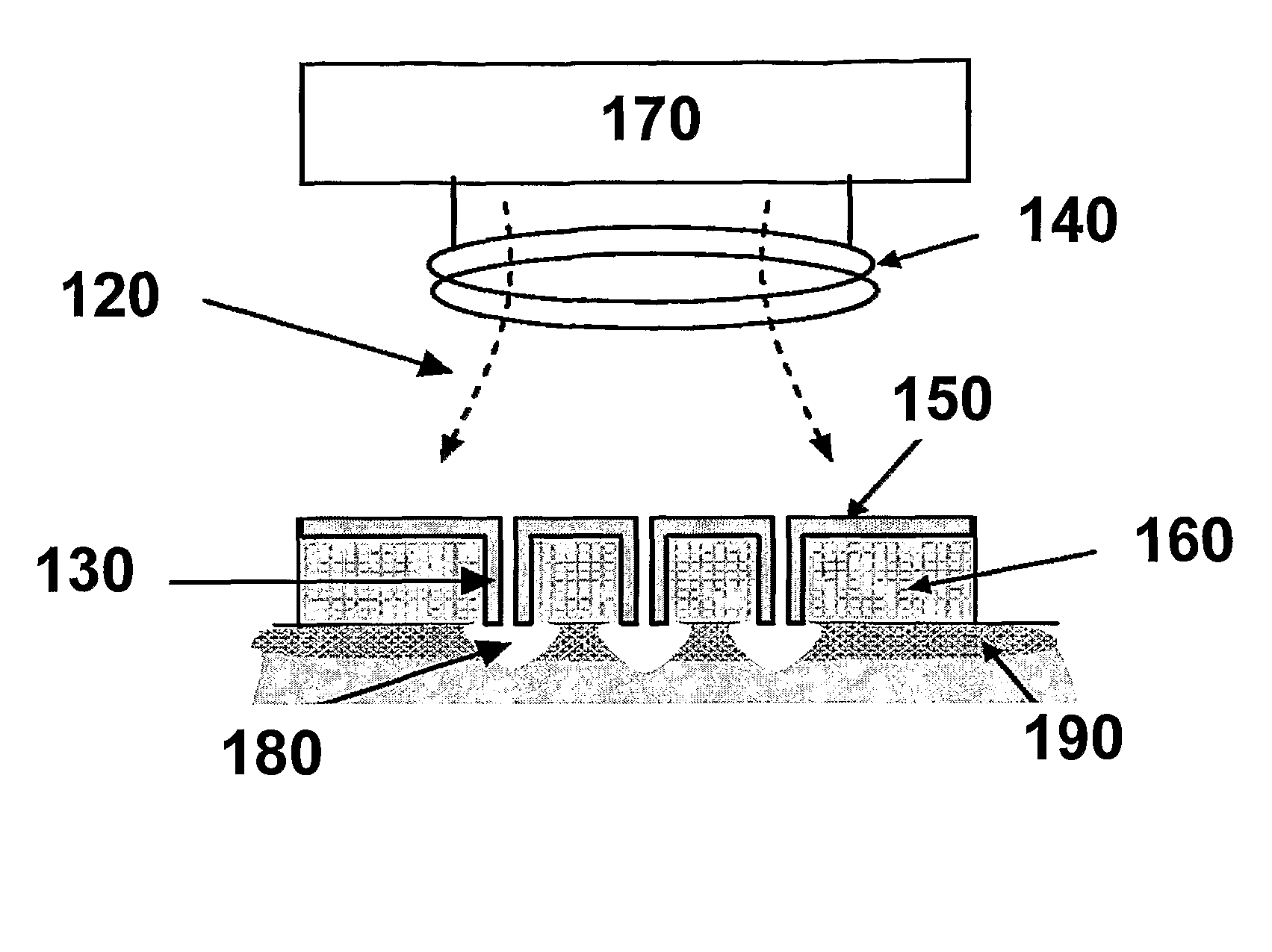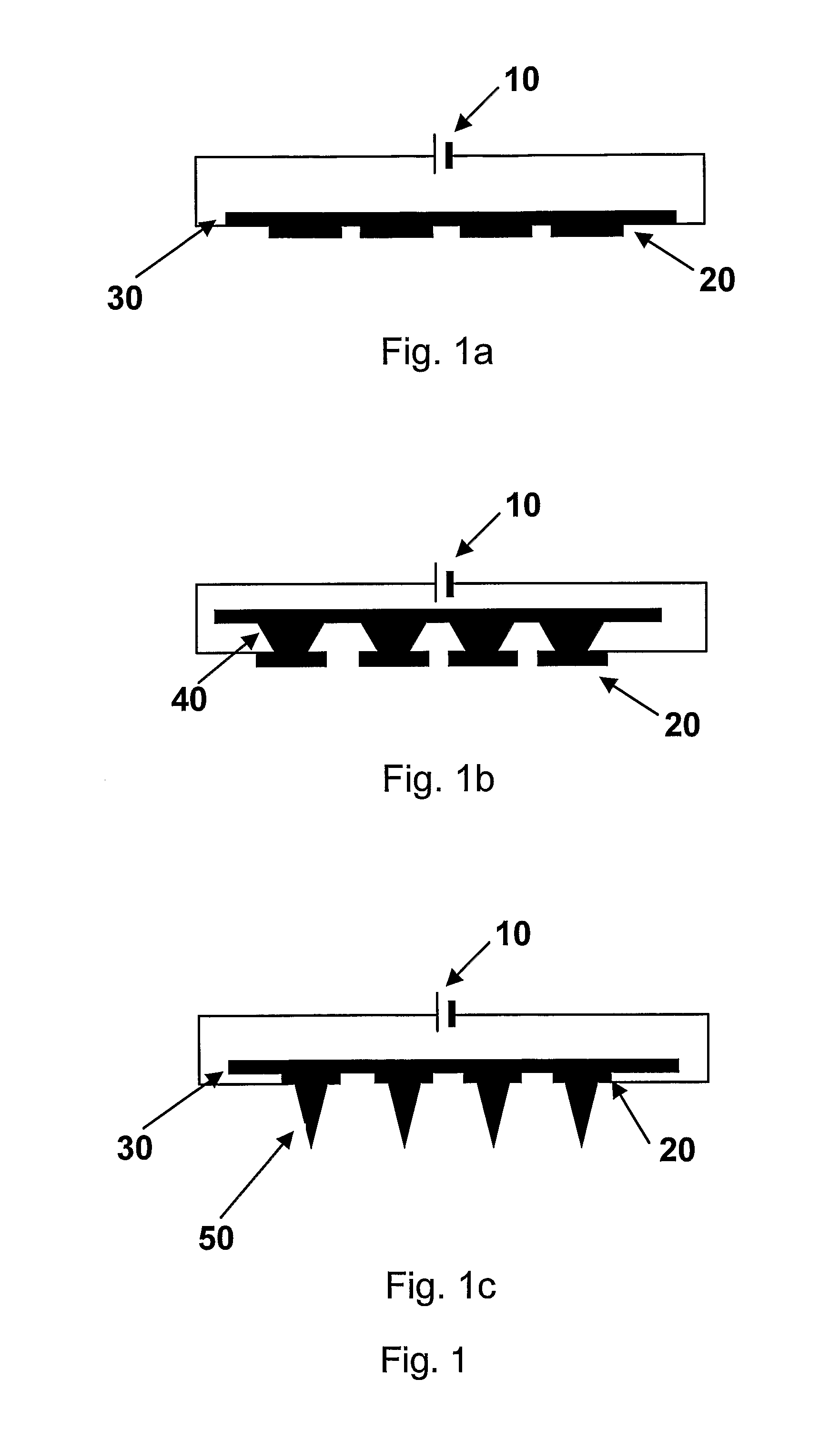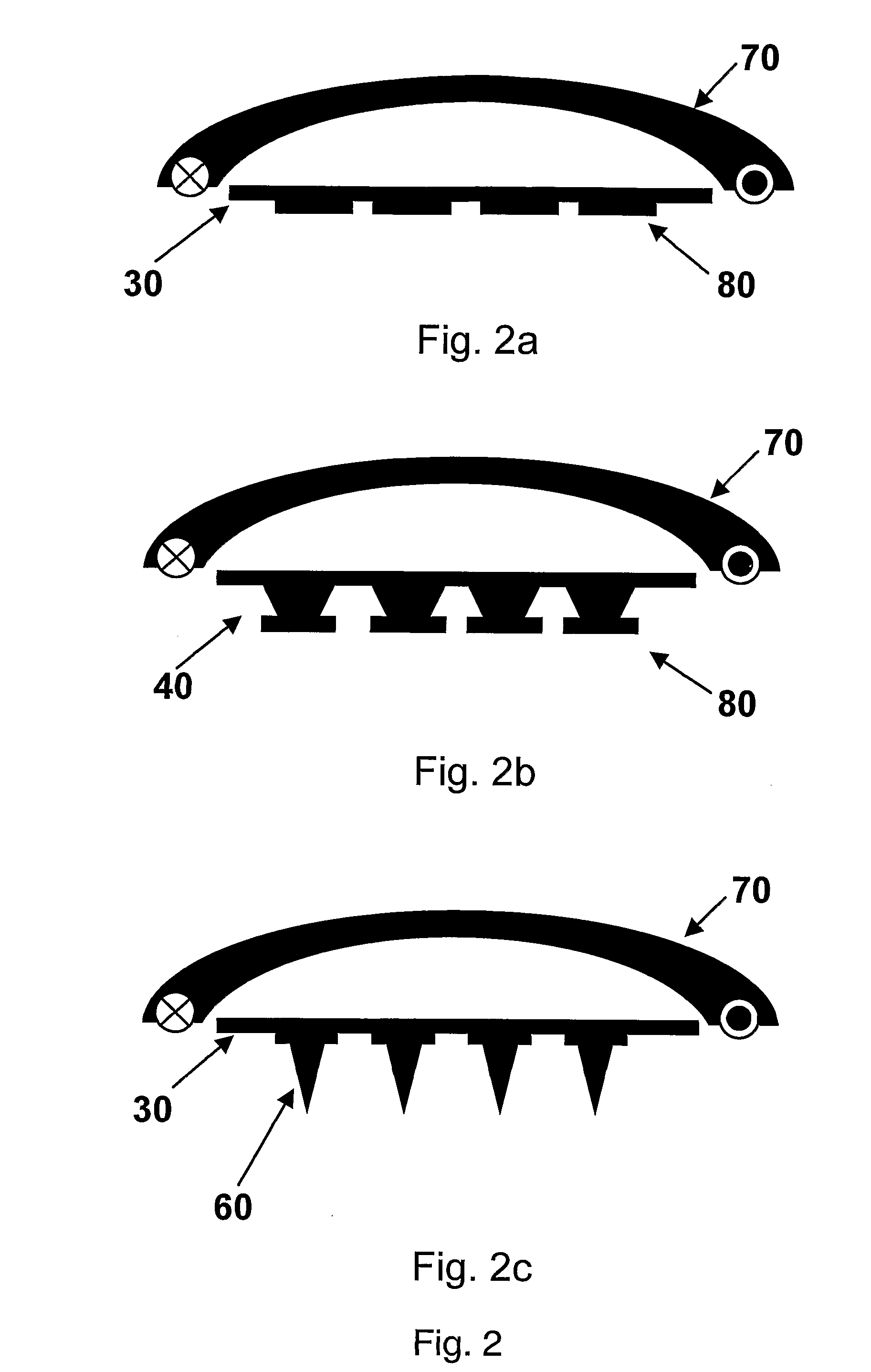Methods and devices for thermal treatment
a technology of thermal treatment and treatment method, which is applied in the direction of osmotic delivery, diagnostic recording/measuring, therapy, etc., can solve the problems of limited commercial application of transdermal drug delivery systems, difficult transdermal delivery, and inability to meet the needs of most protein or biotech active agents, so as to reduce the barrier properties, reduce the barrier, and minimize the barrier properties
- Summary
- Abstract
- Description
- Claims
- Application Information
AI Technical Summary
Benefits of technology
Problems solved by technology
Method used
Image
Examples
example 1
[0075]The hollow post type microheater was fabricated as follows. Photosensitive epoxy polymer SU8 (Microchem, Newton, Mass., USA) was patterned to form an array of posts on a dummy substrate (glass, 2″×3″×1 mm, Dow Corning, Midland, Mich., USA) and an electroplating seed layer of Ti / Cu was deposited on it using a DC sputterer (CVC DC sputterer, CVC, USA). Polymethylmethacrylate solution (PMMA, Microchem, Newton, Mass., USA) was applied to the posts. Reactive ion etching (RIE) was performed to expose the top portion of the posts using a reactive ion etcher (Plasma-Therm RIE, Plasma-Therm, ST. Petersburg, Fla., USA), and the exposed seed layer was removed by wet-etching (sulfuric acid (10 ml)+H2O (100 ml) and hydrofluoric acid (5 ml)+H2O (100 ml). The remaining PMMA was removed by an organic solvent (ethyl lactate) rinse. Nickel was electroplated on the seed layer, and the protruding SU8 was polished away. Polydimethylsiloxane (PDMS, Dow corning, Midland, Mich., USA) is applied evenl...
example 2
[0076]The induction heating performance of the fabricated hollow post array of EXAMPLE 1 has been characterized while applying an AC magnetic field with the excitation coil. Liquid crystal polymer (LCP) paper, which changes its color permanently when a temperature exceeds pre-set temperatures of 110, 121 or 161° C., was used as a temperature indicator for initial studies. The hollow post array was placed on top of the temperature indicator papers inside the coil, and an AC current of controlled duration (0.05 second increment) and specified frequency was applied to the coil. The resulting temperature data is shown in FIG. 9. The excitation time was recorded when each LCP paper changed color. Therefore, the x axis of graph represents the minimum time required to achieve the given temperature (the y axis). The RMS magnetic field applied to the heating element was approximately 50 auss at frequencies of 282 and 342 kHz. Since eddy current loss in the micro-heating element increases wit...
example 3
[0079]The microheaters of the present invention, one with a cone shape and one with the hollow posts, were applied to an in-vitro skin ablation experiment. FIG. 10 is a photomicrograph and FIGS. 11a and 11b is a scanning electron micrograph (SEM) of human cadaver skin (stratum corneum and epidermis) after the microheaters were applied to the skin, activated and removed. Two sites of local skin micro-ablation in the position of the conical tips and an array of donut-shaped openings in the shape of the tips of the hollow posts are shown in FIGS. 10 and 11a and 11b, respectively. The fabricated microheaters created localized micro-ablation in human skin.
[0080]To simulate an in-vivo experiment, the conical microheater was applied and energized on the skin of a hairless rat immediately after death. The skin specimen was then removed and prepared for sectioning using a cryostat microtome. As shown in FIG. 12, the skin was indented due to pressing the cone-shaped microheater against the sk...
PUM
 Login to View More
Login to View More Abstract
Description
Claims
Application Information
 Login to View More
Login to View More - R&D
- Intellectual Property
- Life Sciences
- Materials
- Tech Scout
- Unparalleled Data Quality
- Higher Quality Content
- 60% Fewer Hallucinations
Browse by: Latest US Patents, China's latest patents, Technical Efficacy Thesaurus, Application Domain, Technology Topic, Popular Technical Reports.
© 2025 PatSnap. All rights reserved.Legal|Privacy policy|Modern Slavery Act Transparency Statement|Sitemap|About US| Contact US: help@patsnap.com



